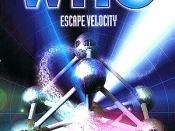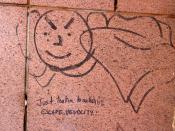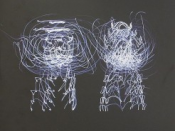Through experiments, Galileo was able to determine the path which projectiles followed. By using an inclined plane, table, and inked bronze ball, Galileo was able to perform experiments to study projectile motion as he did with uniformly accelerated motion. He placed an inclined plane on a table which was able to force an inked bronze ball into a horizontal direction. The ball was able to accelerate in the horizontal direction due to the incline plane which then rolled on the table with a constant horizontal velocity and fell off the edge of the table. The inked ball left a small mark which allowed the horizontal and vertical distances traveled by the ball to be measured. After repeating the experiment with different variables, Galileo realized that the path that the projectile was following a set path.
After examining his results and viewing the horizontal and vertical components of the projectile separately he noticed that the ball reached the ground at the same time even if the horizontal velocity of the ball differed.
He also realized that the projectiles horizontal component experienced no acceleration what so ever while it's vertical component experienced an acceleration of 9.8 m/s" due to gravity. By analyzing the projectiles path as two independent components, Galileo was able to calculate the ball's velocity and displacement at any point in time for the projectile's path was a parabola.
Isaac Newton carried out a 'thought experiment' that formed the roots of the principles of orbital motion which lead into the principles of escape velocity. Newton imagined a cannon ball being fired at the very top of an incredibly high mountain above the earth's atmosphere.
Newton imagined the ball being launched with higher initial velocities. He logically determined that as the cannon ball was being fired at higher velocities, the ball...


